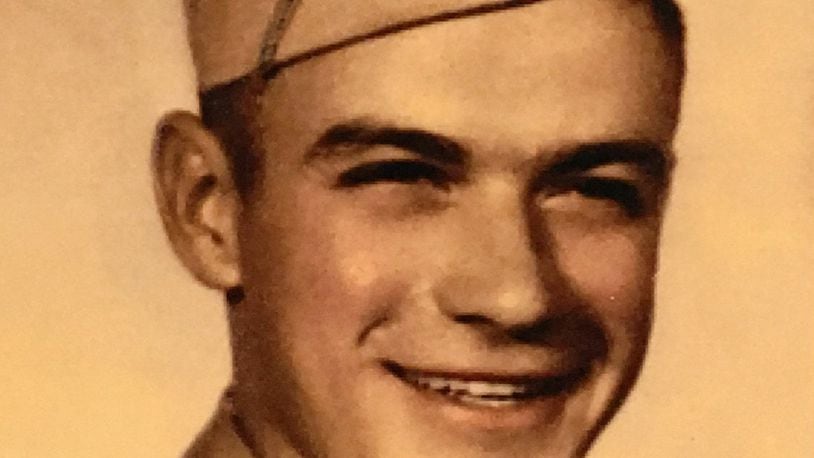“I hope that in my lifetime they’ll find something,” said Barbara Holland, who was born a year after her uncle died.
The Defense POW/MIA Accounting Agency out of Fort Knox in Kentucky has been identifying between 75 and 100 remains of soldiers from past conflicts, but Congress since 2010 has required the department to begin to make 200 identifications a year. And Greg Gardner, chief of Past Conflicts for the Army Casualty Office, said they’ve been working to achieve that threshold but it’s more than just gathering DNA from family members.
“DNA is very important to what we do but it’s not everything,” Gardner said.
RELATED: Gold Star niece hopes war hero uncle’s remains are found
In the case of Holland’s uncle, a DNA sample is needed from a sister and a brother — or a descendant, like Holland — but with remains 50 years and older only the Y chromosome DNA can be tested. Gardner said most of the time, the probability is good, “but it’s not the same of having your DNA compared against your own blood.”
Holland is trying to track down cousins of her other uncles that she’s lost touch with over the years. She’s hoping the military can track them down, which means she’ll be that much closer to finding her uncle while she’s alive.
“I’m 72, healthy and maybe I’ll live for another 20 years and maybe they’ll say they found him,” said Holland. “All I can do is hope for a phone call.”
There are, however, other issues they compare, including but not limited to circumstances of the person’s death, dental records and uniform remains.
That’s what modern soldiers, sailors and Marines provide when they enlist.
There are some 73,000 unaccounted for service men and women from World War II — nearly 3,200 from Ohio — and thousands more from other conflicts, specifically Korea, Vietnam and the Cold War, said Gardner. In World War II, Gardner said, between 20,000 to 25,000 are potentially recoverable and can be identified.
“The U.S. Navy in World War II had many, many casualties lost at seat, and the Navy has the largest numbers overall when you look at World War II,” he said.
There are two DNA laboratory testing facilities, one in Hawaii and one in Nebraska, that make the identification.
Gardner says what he and his small team of 20, all of whom are military veterans and many of whom who lost friends in recent conflicts, are passionate in what they do.
“It’s the most important and most honorable thing I’ve done in my life,” said Gardner. “It truly is more of a calling than a job.”
Telling members of a family they found a once-lost family member, the gratitude and emotions they display, “it’s really hard to put into words.”
Warren, who was awarded the Bronze Star and two Purple Hearts, was last seen laying with five others on the banks of the Roer River in Western Germany after being shot at by German soldiers on Feb. 15, 1945.
“The problem is what happened to who,” said Gardner. “They’re unknown for a reason and there’s something happened at the time. And we don’t know what happened to them until we recover them and identify them today.”
RELATED: Fairfield Twp. residents submit plans for military veterans memorial
There are remains at one of the many official memorial sites around Europe, or they may be in one of an unknown number of unmarked graves. If they are at an official ceremony, the military must have DNA of the family to compare it against the DNA of the unknown service member before they can be exhumed and remains are returned to the family.
There are some 9,000 remains in U.S. cemeteries, and other areas, such as the Netherlands American Cemetery in Margraten, Netherlands, where Warren and others are memorialized.
“The goal is to try to match them up and you have to have at least some idea of whose who to do that,” he said.
But there are still several thousand soldiers from World War I, and more from conflicts prior, but Congress must make it a mission of The Defense POW/MIA Accounting Agency to actively search for those remains and family members.
That doesn’t mean the agency doesn’t recover remains from prior conflicts.
Gardner said in September the remains more than a dozen Americans were found where the Battle of Monterrey occurred in the Mexican-American War, which lasted from 1846 to 1848. Volunteers from Tennessee, Ohio and other states, fought in the three-day battle in 1846.
— — —
CONTACTS
If the Defense POW/MIA Accounting Agency has not reached out to you and you have a family member who is unaccounted for in any past hostile military conflict, you can call:
- U.S. Air Force: (800) 531-5501
- U.S. Army: (800) 892-2490
- U.S. Marine Corps: (800) 847-1597
- U.S. Navy: (800) 443-9298
You can also visit www.dpaa.mil for more information
About the Author
